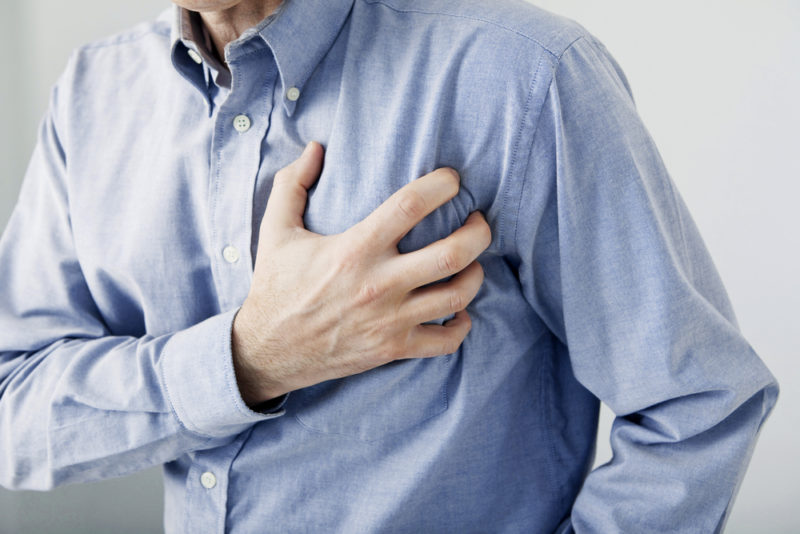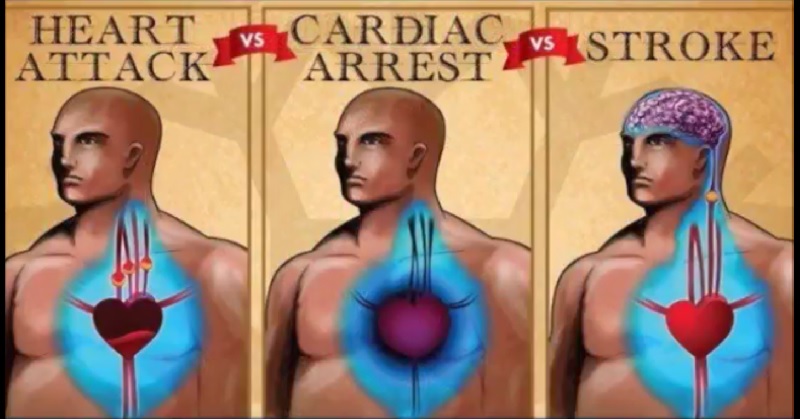Cardiovascular disease accounts for 25% of all deaths in the United States. In case that’s not shocking enough, let’s look at the statistics another way. Every single minute, somebody in the nation dies because of a heart malfunction. Scary stuff.
Now, when we speak about fatal heart malfunctions, we’re referring to three conditions – cardiac arrest, stroke and heart attack. While it’s convenient to lump these conditions together for statistics purposes, it is absolutely imperative to distinguish between them in the real world.
You see, while they might look and feel the same to the untrained eye, they differ in some very crucial ways. Particularly, they appear for vastly different reasons and require different treatment methods. Knowing exactly what you or your loved one is suffering from could just save a life if emergency workers receive this information promptly.

So, without further ado, let’s explore the specifics of each condition.
Heart Attack
Heart attacks occur when artery blockage – which is often comprised of cholesterol – suddenly bursts, resulting in a blood blot. If the blood clot becomes large enough it can completely block blood flow to the organ. This robs it of the oxygen it needs to survive.
Symptoms:
Before the actual attack, the victim may complain of difficulty breathing, anxiety, chest pain and aches in their neck, abdomen, back, jaw and left arm. If you notice these symptoms, it’s absolutely imperative that you communicate them to the people around you. This will help them, as well as emergency responders, identify your condition as a heart attack.
Stroke
While a heart attack involves a blockage of blood flow to the heart, a stroke involves blockage leading to the brain. In fact, you could consider a stroke to be a ‘brain attack.’
Symptoms:
Prior to a stroke, victims often experience trouble seeing in one or both eyes, headache, difficulty walking and confusion. They may also have difficulty speaking, resulting in slurred or jumbled language.
Individuals around the victim should note when the symptoms began, as this may affect how emergency responders treat them.
Cardiac Arrest
Cardiac arrest happens when heart tissue dies as a result of electrical system malfunction. Unlike a heart attack or stroke, cardiac arrest does not require artery blockage to occur.
Symptoms:
Because of this, cardiac arrest often appears without warning. When it happens, victims will often collapse suddenly, lose their pulse and become unconscious. The sudden nature of cardiac arrest can help people around the victim distinguish it from a heart attack or stroke. This is why communicating symptoms of the other two conditions as they appear is so important.
Have a look at the following video to learn more about the key differences between heart attacks, stroke and cardiac arrest.
https://youtu.be/SH3ybgf9MKM
One More Thing – Pulmonary Embolism
If a stroke can be considered a ‘brain attack,’ a pulmonary embolism can be considered a ‘lung attack.’ It happens when arteries that lead to the lungs become blocked. Victims will experience shortness of breath as well as sudden, sharp chest pain, anxiety, coughing up of blood or foamy mucus and signs of shock.
Pulmonary embolisms are often mistaken for heart attacks and this mistake kills every time!
Please pass this information along – it could just save a life!
Sources:
WebMD
MedlinePlus.gov
Mayo Clinic
Heart.org
CDC
Medical News Today


